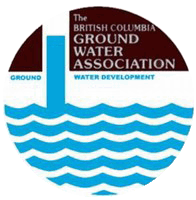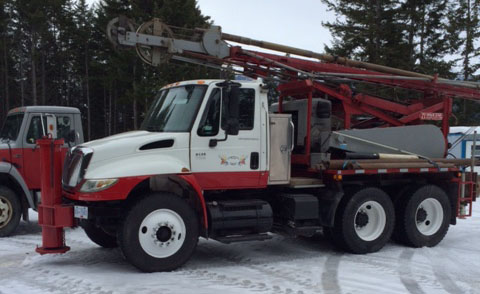
Water Well Drilling & Maintenance
Residential & Commercial
Does your property need a well drilled or maintained? We can help!
There are different types of water well drilling:
- Cable tool drilling
- Air Rotary Drilling
We offer both types of water well drilling, as well as maintenance of existing wells.
Contact Us for a QuoteWell Development and Rehabilitation
Well development is the cleaning out the clay and silt introduced during the drilling process as well as the finer part of the aquifer directly around the well screen prior to putting the well into service.
Effective well development increases the rate of water movement from the aquifer into the well, stabilizes the aquifer to prevent sand pumping, thereby producing better quality water and increasing the service life of the pump cylinder and well and removes organic and inorganic material which may inhibit effective well disinfection.
Artesian Well Control
If water reaches the ground surface under the natural pressure of the aquifer, the well is called a flowing artesian well. An aquifer is a geologic layer of porous and permeable material such as sand and gravel, limestone, or sandstone, through which water flows and is stored.
Flow from artesian wells should be controlled to prevent wasting groundwater, flooding, damage and sinkholes can occur. The quality of the surface water and the habitat of aquatic organisms can be impacted.
A flowing artesian well is considered "under control" when the entire flow is through the production casing to the wellhead and the flow can be stopped indefinitely without leaking on the surface of the ground and with no leakage into any other aquifer penetrated by the well.
Water Cistern Sales & Installation
If you have a low flowing well or no water on your property an option is to use a Cistern. Underground water storage tanks are used for underground storage of potable drinking water, wastewater, & rainwater collection.
Pump Testing (Well Drawdown Test)
A well draw down test is performed at the well, using a special pump which draws water directly from the well.
The inspector can vary the rate at which the pump draws water out of the well in order to determine the rate at which the well can deliver a sustained water flow rate or quantity over a measured time period, usually several hours, typically 3 hours or 4 hours, and in some cases over 24 hours.
A true well flow test or well draw down test will discover the ability of the well to deliver water, without confusion caused by the characteristics of the building's own well pump, pump control, water pressure tank, water piping, or fixtures.

Pump Installations
We service & install water pumps as part of your well system.
We us Grundfos Pumps, and Flexcon Pressure Systems.
Typical Causes of Reduced Well Yield
- Mechanical Blockage (e.g. fine-grained soil materials, corrosion by-products):
- Fine-grained soil particles or corrosion by-products originating from metallic well parts can enter the well through the screen and reduce the water flow from the aquifer into the well.
- Chemical Encrustation (e.g. iron/manganese oxides, calcium/magnesium carbonates, sulphates):
- Chemical encrustation is the deposition of minerals on the well screen or gravel pack, which act to restrict the movement of water into a well. Chemical encrustation is caused by the precipitation of minerals dissolved in the groundwater due to changes in flow and/or pressure conditions at the well.
- Bacteriological Plugging (e.g. iron bacteria):
- Microorganisms, such as bacteria, can cause clogging problems in wells, pipelines, and treatment facilities. This includes the types of iron-related bacteria, which utilise dissolved iron as an energy source and others, which cause iron precipitation in a secondary manner.
Well Deactivation
There are two steps to properly decommission a well; deactivate and close. What's the difference between deactivating and closing a well?
- Deactivation: take the well temporarily out of service.
- Closure: take the well permanently out of service.
If your well has not been used for five (5) years, the well must be deactivated. Deactivating a well involves capping, securing, protecting and maintaining the well in a safe and sanitary condition. If the deactivated well is not used for ten (10) years, it must then be properly closed. Closing of a well involves backfilling and sealing the well. Who can perform a well closure? According to B.C's Ground Water Protection Regulation, drilled wells more than 5 meters (15 feet) or dug wells more than 15 metres (50 feet) deep must be closed by a Qualified Well Driller.
Contact Us for a Quote


About us
Licensed Well Driller/Pump Installer

We are experienced in all aspects of water well drilling focusing on cable tool operations, well development and production testing.

